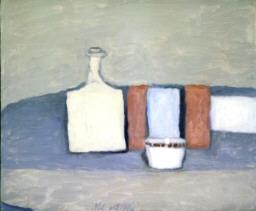New York is paying tribute to Giorgio Morandi with three exhibitions exploring the work of one of Italy's greatest 20th-century artists.
Although Morandi's work was exhibited in the Metropolitan Museum of Modern Art nearly 60 years ago, this is the first time the city has devoted an event entirely to the Bologna-born artist (1890-1964).
The centrepiece of the Morandi tribute is an exhibition at the Met, running until December 14.
Described as the most important retrospective devoted to Morandi anywhere in the world, the exhibit has drawn enthusiastic responses from leading critics in the New York Times and The New Yorker.
Entitled simply 'Giorgio Morandi: 1890-1964', the show spans the artist's entire career, from his early metaphysical works to his late still lifes.
It features 116 paintings, drawings and etchings arrayed in chronological order, highlighting the recurrent motifs of his work: still lifes and landscapes, along with the occasional self-portrait.
The second Morandi event is an extremely rare selection of 22 drawings and watercolours, on show at the Italian Cultural Institute until December 5.
Institute Director Renato Miracco explained: ''These are works that have never been displayed in public before, all from private European and American collections and donated by Morandi himself.
''Around 1,200 of Morandi's paintings are familiar but almost nothing is known about his watercolours and drawings, which total a few dozen at most''.
The third event explores Morandi's prints, which are considered a body of work in their own right.
He completed 133 etchings in total and was professor of etching at the Academy of Fine Arts from 1930 until 1956.
The exhibit is on show at the Casa Italiana Zerilli-Marimo at New York University until October 30.
Born in Bologna in 1890, Morandi lived quietly with his three sisters, venturing further afield only occasionally for exhibitions of his work.
He fought in the First World War but returned home after a breakdown and following this episode, his focus grew ever more narrow. He repeatedly returned to the same themes in his still lifes, subtly altering composition and tone to create entirely different works.
Unlike other artists of his time he steered clear of politics and was one of only a few to avoid the taint of Fascism.
Morandi won early popularity and enjoyed great critical acclaim throughout his career but his work was sometimes overlooked in favour of flashier counterparts.
His quiet, contemplative still lifes and landscapes are today hailed for their complexity and subtlety.










